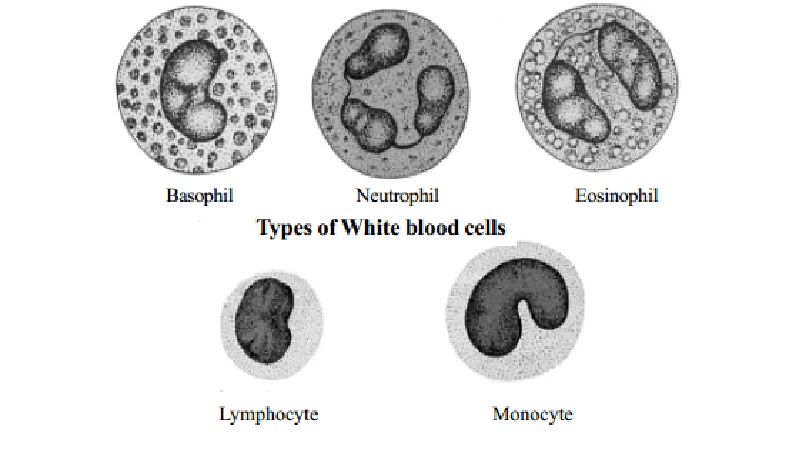Chapter: 11th 12th std standard Home Science Maintain Basic Knowledge for family life Higher secondary school College
White blood cells(W.B.C or Leucocytes) and Leucocytosis

White blood cells
They are also called as W.B.C or Leucocytes These are transparent, not coloured and fewer than the red cells possessing nucleus. There are 8,000 W.B..C. in each cubic millimeter of blood.
Different types of Leucocytes are:
(a) Granular Leucocytes which includes Neutrophils, Eosinophils and Basophils.
(b) Agranular Leucocytes consists of lymphocytes and monocytes cells.
Granulocytes and monocytes play a vital role in protecting the body from micro organisms. By their power of amoeboid movement they can move freely in and out of the blood vessels and wander about in all parts of the body. They surround any area which is infected or injured and fight against the organisms, by ingesting them by the process of phagocytosis. Lymphocytes make antibodies to protect against chronic infection and to maintain immunity to infections.
WBC and Inflammation
Inflammation is a series of changes in tissues in response to injury. When injury occurs due to bacteria, trauma, chemicals, heat or any other substance, several substances are released that cause local swelling around the injured area. The neutrophils also migrate to this area in increased number. They are phagocytic in action. Similarly the macrophages are released which have greater phagocytic action.
Pus formation: When neutrophils and macrophages engulf large amounts of bacteria and dead tissue they themselves eventually die. After several days a mixture of dead neutrophils, macrophages and tissue is formed. Such a mixture is known as pus.
The Reticuloendothelial system
In addition to the white blood cells, another group of cells distributed widely throughout the tissues and lining some of the blood and lymph channels helps to protect the body against foreign invaders. This group of cells are collectively called the reticuloendothelial system. These cells are mainly derived from two types of cells.
Cells derived from monocytes that become tissue macrophages. These are phagocytic in action.
Lymphocytic cells present in lymph nodes.
Leucocytosis
A rise in the number of white cells of the blood is called leucocytosis. The increase may be due to any one of the various celltypes.
Leucopenia is the term applied to a reduction in the number of leucocytes below the normal.
Leukemia is a malignant disease of the bone marrow that results in uncontrolled increase in the production of leukocytes. This can lead to anaemia, thrombocytopenia and leucopenia. It is genetic in nature.
Related Topics